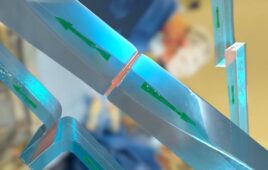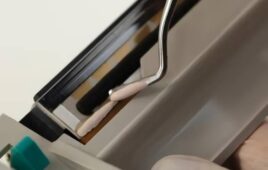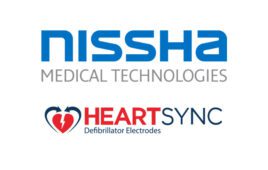Medical device companies are increasingly using plastic substrates that are tough and sterilization/chemical resistant. But they also come with adhesion challenges.
Michelle Gumbert and Patrick Vaughn, Dymax
For medical devices such as catheters, prefilled syringes, vials, test tubes and injector pens, many manufacturers are turning to plastic substrates that are specifically formulated to resist harsh chemical and environmental end-use conditions.Growing in popularity are thermoplastic materials including nylon and nylon derivatives like polyether block amides (PEBAs) as well as cyclic olefin polymers and copolymers (COC/COP).
Ensuring a lasting adhesive bond
Like plastics, adhesives are polymeric materials with similar physical properties including surface energies. When a plastic substrate has a higher surface energy than the adhesive, the liquid adhesive “wets” or spreads out in a thin layer over the surface of a plastic. When a plastic substrate has the same or lower surface energy than an adhesive, the liquid adhesive will bead up rather than wet the substrate.
Adhesives that do not wet a surface will not fill surface irregularities, making chemical bonding a challenge. The substrate should ideally have a surface energy that is at least 7–10 dynes higher than the adhesive, with most adhesives averaging 34 to 36 dynes/cm2. Low surface energy on plastics can also occur for two reasons beyond the properties of the substrate material: surface contamination and low activation of the substrate.
When adhesives do not wet out on a plastic surface, manufacturers can treat the substrate by cleaning the surface to remove contaminants and/or modifying the surface to approve adhesion. Most surfaces have some level of contamination from dirt, oil, plasticizers, mold release compounds and other materials. Handling parts can also result in contamination. By cleaning plastic parts prior to assembly, contaminants are removed and adhesion may improve. One of the most common cleaning solvents is isopropyl alcohol (IPA).
Several techniques can activate a substrate or change the existing surface to improve adhesion. Grit blasting, micro blasting and sanding will abrade the plastic’s surface and make bonding easier by exposing crystalline microstructures with different wetting characteristics. These abrasion methods physically remove the top layer of the substrate.
Other activation techniques add a surface layer to improve adhesion. Corona discharge is widely used in medical device manufacturing and it can be done in-line during automated production. During corona treatment, electrons accelerated onto the surface of the plastic create oxygenation, which generates new carbonyl groups with a higher surface energy. This increases reactivity, allowing the adhesive to spread over a larger area than bead up. As corona treatment has a limited lifespan, assembly should happen quickly.
Similar to corona discharge, plasma treatment bombards a surface with gases such as argon, oxygen, nitrogen or helium to introduce new amine, acetal, carboxyl or hydroxyl groups to the surface. This increases surface energy, which results in higher bond strength and better wet out.
Chemical treatments involve the application of strong oxidative agents such as chromic acid to etch the substrate surface and create a stronger bond. Depending on the plastic formulation, surface wetting can dramatically improve.
Flame treatments will also change surface characteristics. In this process, the plastic passes rapidly through a natural gas flame, the surface melts and a reacting layer of oxidation deposits onto the substrate surface to improve adhesion.
Go to Dymax’s website to download the full white paper: “Ensuring adhesion on medical devices made with hard-to-bond plastic substrates.”
Michelle Gumbert is a market segment/product specialist and Patrick Vaughn is an adhesives scientist at Dymax (Torrington, Conn.).






